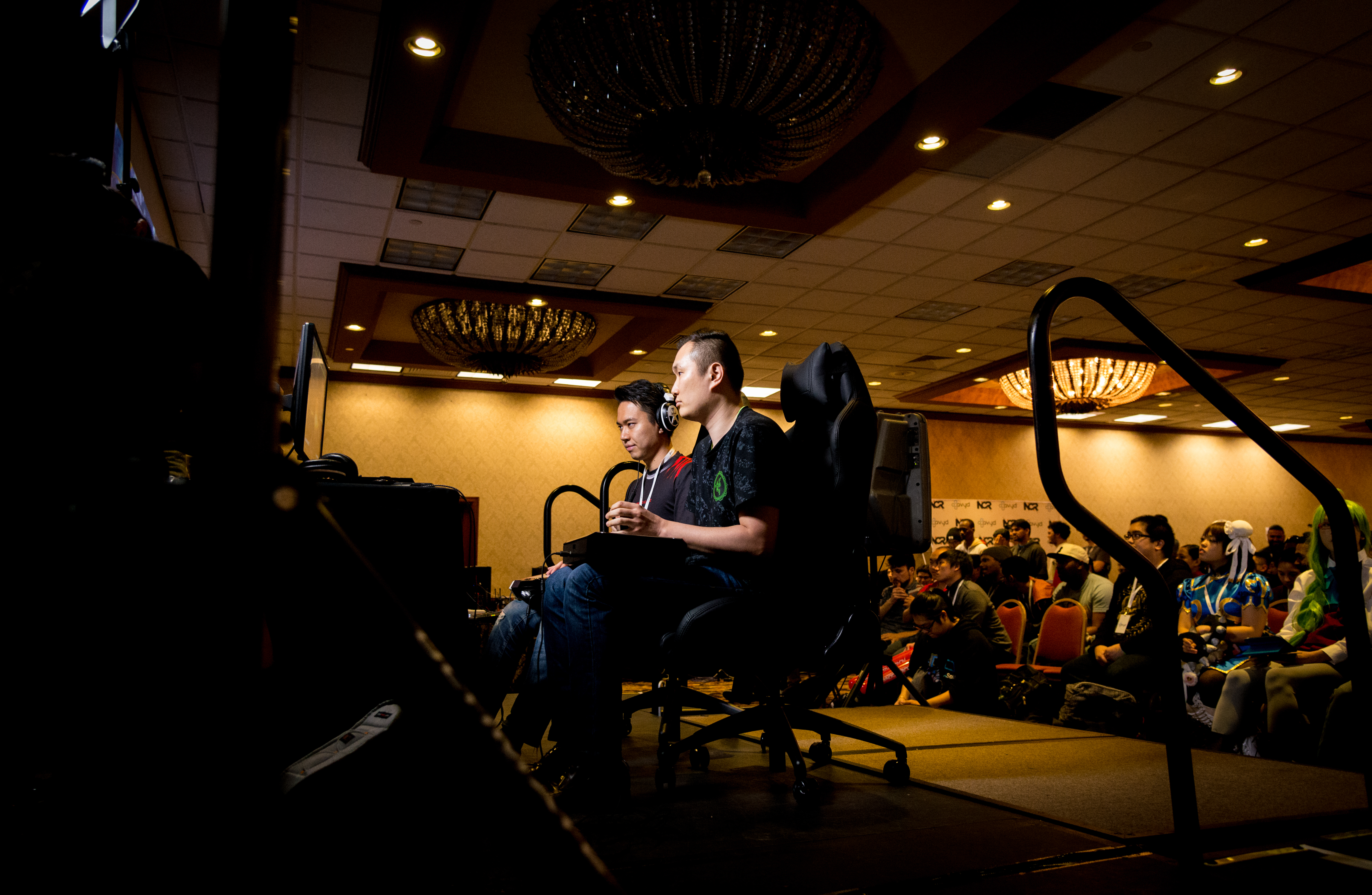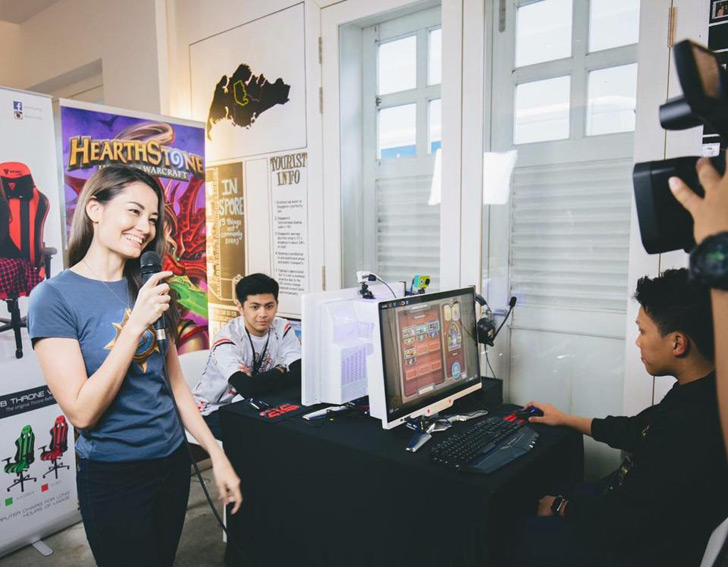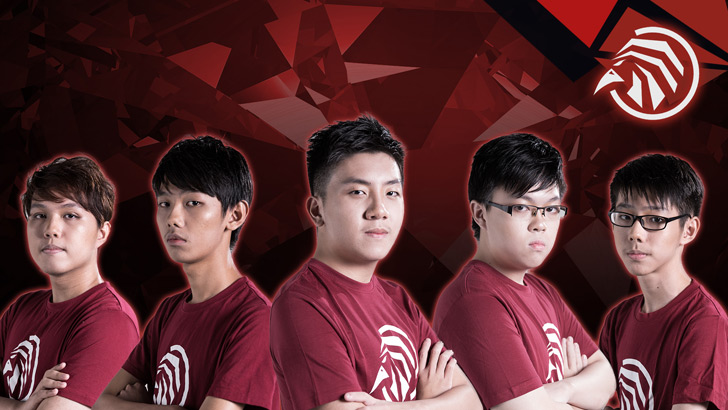Pathra Cadness may have the best job on the planet.
Known professionally by her first name, Pathra plays video games for a living. She broadcasts live video of herself on the streaming platform Twitch, mostly playing her favourite game, Hearthstone: Heroes of Warcraft, while other Hearthstone fans watch and comment. “Since I play games every day,” she says, “I thought I might as well try streaming and see how many people would actually watch me.”
Called a ‘streamer’, Pathra, a half-Thai, half-New Zealander living in Manila, has also dabbled in modelling (she has been featured by FHM Philippines and Esquire Philippines) and graphic design (she makes the graphics for her streaming homepage).
Streamers such as Pathra make up just one component of the wider professional gaming industry, also known as eSports. Nearly 45 years after the release of the addictively simple arcade game Pong, it is a business currently worth $748m that is expected to reach $1.9 billion by 2018 with the help of betting sites and amateur tournament platforms, according to research firm SuperData.
Simply put, professional gaming is becoming a worldwide craze. Digital market research specialists Juniper Research predicts that, by 2020, professional gaming’s audience will double from 133 million to 310 million viewers, surpassing the NFL’s viewership for the 2014 season.
Twitch, which was bought by Amazon in September 2014 for an estimated $1 billion, has an average of 1.7 million monthly broadcasters and 550,000 viewers at any given time. The typical viewer spends seven hours a month watching live streams on the site, according to the site’s internal analytics.
The University of California, Irvine, now offers scholarships for video gamers that last four years and are broadly similar to those offered for physical sports. There is a little league for gamers in Seattle, where adolescents gather to play games such as Minecraft, an open-world game that has been likened to a virtual version of Lego. Meanwhile, US athletes Alex Rodriguez, Shaquille O’Neal and Jimmy Rollins have invested in NRG eSports, a team that plays games such as League of Legends and Counter-Strike: Global Offensive.

Team players
While there are individual celebrities in the gaming world – Sweden’s Felix ‘PewDiePie’ Kjellberg has more than 45 million YouTube subscribers – many players operate within a team – practising, drilling and competing like a typical football squad.
While there is “a solution to every problem”, managing a team of male gamers can be complicated.
Eleana Lim, Team Rigel
Eleana Lim is manager of Singapore-based Team Rigel, which specialises in the multiplayer online battle arena game League of Legends. As manager, Lim organises her team’s schedules, coordinates with tournament organisers and sponsors, and keeps her players’ egos in check. While there is “a solution to every problem”, managing a team of male gamers can be complicated. A manager, Lim says, has to “understand the emotions of each individual player”, adding that, “after all, you are dealing with a group of boys”.
Team Rigel is one of many squads looking to make it big in Southeast Asia’s eSports scene, which, for the time being, is playing catch-up to the big markets: the US, Europe and China.
In Good Luck Have Fun: The Rise of eSports, author Roland Li writes: “Southeast Asian eSports suffers from lack of funding and tournaments with big prize pools… Some of the region’s biggest stars have left to join Chinese teams, a much bigger market.”
Tiffani Lim, the former manager of League of Legends team Bangkok Titans, believes that Southeast Asia needs “governing bodies or key personalities to help grow the local communities and fan base”. While new companies and investors are looking to Southeast Asia, Lim says that many novice players do not have legally binding contracts to protect them and are often too young to understand their rights.
One man looking to address such problems is Adrian Gaffor, co-founder and managing director of Malaysia-based Fallout Gaming, a company that organises tournaments and helps brands run advertising campaigns and promotional events in Southeast Asia. “We understand that more revenue needs to be put into the scene for it to grow,” he says.
Gaffor believes that brands are missing out on the opportunity to market to gamers in Southeast Asia. Players, he says, respond to big brands, citing Mountain Dew – which has its own gamer-targeted soft drink named Game Fuel – as an example. Energy drink monolith Red Bull also sponsors numerous eSports tournaments.
Cashing in
Research firm SuperData estimates that corporate sponsorships for eSports in North America reached $111m in 2015, from companies including Nissan, Red Bull and Samsung.
It has been widely reported that, in terms of player numbers, League of Legends is currently the world’s most popular online game. However, Dota 2 is the most lucrative title for gamers, bringing in more than $31m of prize earnings in 2015 through 220 tournaments, based on data from esportsearnings.com.

The global average earning per player in 2015 was $5,128, according to esportsearnings.com. The median earning – not skewed by big-earners – was only $234.
Even as eSports infiltrate the mainstream, professional gaming is far from egalitarian. According to Alex Fletcher, founder and president of eSports consulting firm Entiva Group – one of many ancillary organisations cropping up in the eSports sphere – only a small percentage of the community earns a sustainable income from their gaming. “Amongst those making a full-time living,” he says, “it’s not even evenly distributed within that group,” with a disproportionately small percentage of players taking the lion’s share of the earnings. The global average earning per player in 2015 was $5,128, according to esportsearnings.com. The median earning – not skewed by big-earners – was only $234.
Fletcher likens professional gaming to hip-hop, something that “took time to develop into something that people outside the immediate community really understand and… to develop commercial viability”.
Although the streaming business took a while to take off for Pathra, she soon saw regular viewers coming back to her channel to see her play Hearthstone.
“The atmosphere that you create for your stream [is important],” Pathra notes. While most of a viewer’s screen is dominated by the Hearthstone interface, displaying what Pathra sees on her computer, there is a small panel that shows Pathra herself – warmly chatting with viewers, celebrating a victory, grimacing after an ill-advised play. Her regular viewers suggest songs for her channel playlist, offer Hearthstone advice and tell her about their day.
While watching Pathra play is free, some viewers choose to pay a $5 monthly fee to subscribe to her channel, affording them access to a subscriber-only chat and emojis custom-made by Pathra herself, among other benefits. Viewers sometimes donate extra money to show their support, with the top donation on her page standing at $500. “There’s this ego thing with donations,” Pathra says. “For example, if someone is top donator at $100, someone else that jumps into the stream might see it and say: ‘Oh, I can beat that.’”
According to Pathra, there are two ends of the spectrum when it comes to streamers: highly skilled technical players that show viewers how the pros play, and bombastic personalities that are more concerned with entertaining their followers. “I think I’m a bit of both,” she says. She adds that her channel is “not a booby stream”, alluding to female streamers that capitalise on the carnal desires of some gamers. “I don’t get that kind of attention.”
Pathra says her fans like that she is a skilled player: “I tried to actually learn the game and get better at it.” She has reached the top rank in Hearthstone seven times – a feat achieved by less than 0.5% of all players – and has been a commentator for three live gaming tournaments hosted by Activision Blizzard, Hearthstone’s developer – which earned more than $4.6 billion in revenue in 2015.
Losing lives

Much like rockstars and actors, though, professional gamers tend to have a short shelf life. “Right now a lot of these players realise they can’t continue to… devote the 10 to 12 hours a day to training, playing and travelling for more than a period of their life. The pay just isn’t commensurate with the time output,” says Fletcher.
Team Rigel’s Daniel ‘RG Revive’ Tan agrees, saying it is “tough to commit, considering our studies and that a country like Singapore doesn’t support eSports”.
Virtual athletes must also be wary of wear and tear. “Most of the players worry about things like carpal tunnel syndrome or other injuries related to eSports,” says Fletcher. Neck and back injuries from sitting too long, as well as blood clots, are not unheard of.
Nicholas Khoo, chairman and co-founder of the Singapore Cybersports and Online Gaming Association, says that his organisation’s message has always been to “have a backup plan. Even if you are successful in eSports, there is a lifespan.”
Some eSports careers burn out for more nefarious reasons. Ma ‘sAviOr’ Jae Yoon, a renowned South Korean StarCraft player, was found guilty in 2010 of match-fixing, leading to a lifetime ban from competitive play. Ma’s championship titles were annulled, and the Seoul Central Court sentenced him to 120 hours of community service and two years of probation, according to Roland Li’s book.
There is, of course, a section of society that finds the burgeoning world of eSports absurd. Colin Cowherd, an outspoken US sports talk show host formerly of ESPN, declared that he would quit his job if asked to cover professional gaming. “I am not a friend of eSports,” Cowherd said on his daily talk show, The Herd, in September 2015. “It’s the same with professional wrestling – it’s for booger eaters,” he continued. “I don’t know, go outside. How about nature? How about enjoying planet Earth and being part of a community of people who talk to each other?”
Fletcher believes that kickback from mainstream media and society is natural, and that a process of “social acculturation” will occur, where people are slowly introduced to the concept until it seems normal. “When [they] become more and more exposed to it, they’ll kick off a network effect” inspiring a new generation of fans.
“A part of that will be people calling it BS, saying it’s not a sport,” Fletcher adds. “But they’ll be talking about it nonetheless.”


